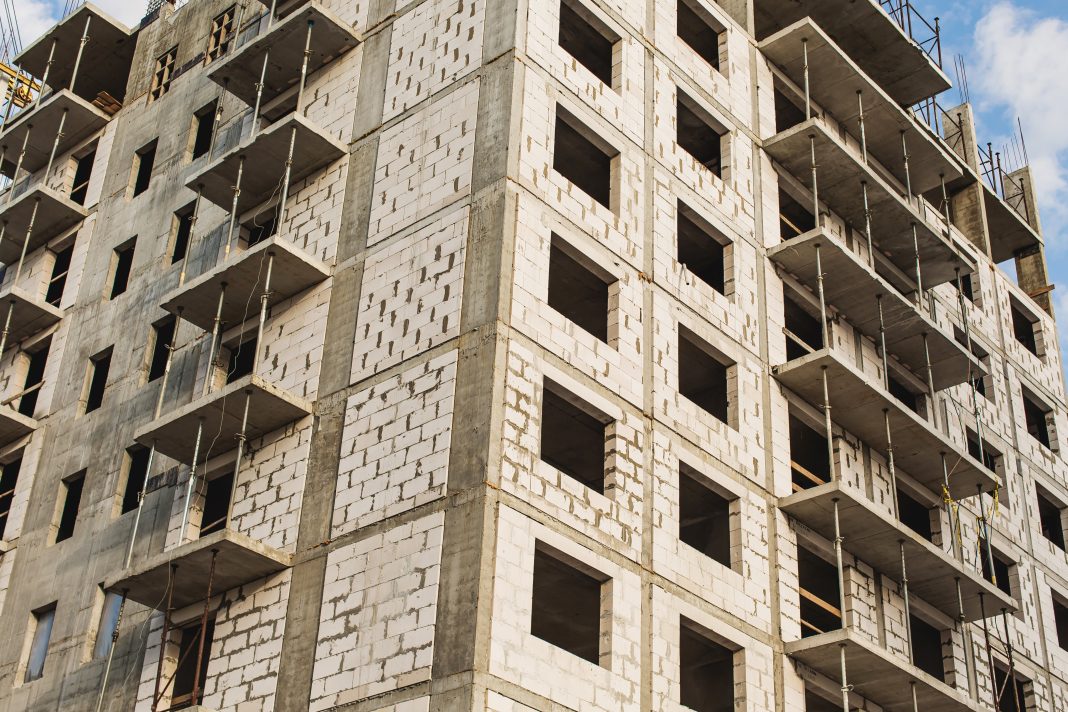At the ASHRAE conference for global heating, industry members discussed the advantages of the M&E delivery approach for modular buildings over the RIBA Plan of Work stages
At the conference, ventilation and air conditioning (HVAC) and building control experts presented an opportunity to reinforce the significance of modern methods of construction (MMC) and Design for manufacture and assembly (DfMA).
Although only circa 5% of the construction industry is taking advantage of it, there are a few significant global projects that have shone a spotlight on the advantages of DfMA construction techniques.
For many of those working in the industry, DfMA has the perception that it is better placed for large scale projects with the resource and scope to explore progressive construction techniques. The belief is that it is somehow not only not relevant to the everyday schemes more likely to be delivered through traditional practices but that implementing MMC/DfMA techniques actually reduces the quality of the outcome.
The audience for the seminar: Accelerating Change in Building Design and Operation towards a Decarbonized and Net-Zero Energy Future, offered their thoughts on hearing the term modular: “makeshift, temporary buildings,” “site cabins,” “unattractive boxes,” “low, poor-quality homes” “tiny, cramped rooms,” “cheap.”
Educating members of the construction industry on the benefits of MMC
The initial stage of educating members of the construction industry on the benefits of MMC is to highlight the overwhelming evidence of those every day projects; the higher quality delivery, increased speed of getting to site, improved health and safety, and reduced costs across the whole programme.
More significantly for an HVAC audience, the ability to enable a plug and play functionality both horizontally and vertically between modules for all MEP systems illustrates how the application of these new methods can change the consideration of MEP from an installation to a prioritised product.
Within a Modular programme, MEP is no longer the ‘inconvenient but necessary,’ rather the application that can significantly improve quality, speed and sustainability of projects.
What is harder to convince a conservative construction audience is to forget all they have been taught on the established, traditional and linear construction programme frameworks that haven’t changed for over 20 years. For a UK audience, does that mean forgetting the RIBA Plan of Work?
RIBA published its first Design for Manufacture and Assembly Overlay to the RIBA Plan of Work in 2016
In 2016, RIBA published its first Design for Manufacture and Assembly Overlay to the RIBA Plan of Work to be embedded as a project management guide when implementing modern methods of construction. The traditional seven stages still exist but are aligned with a DfMA programme.
However, upfront delivery is one of the most significant USPs of MMC; it is what underpins the efficiency of the whole process and enables the speed of delivery for which it has become recognised. This begs the question of whether there is still a place for the RIBA Plan of Work stages if we’re encouraging the industry more towards a modular build approach and, increasingly, finalising a building’s detail before stages two or three.
Some also might argue that RIBA has struggled over recent years as changes in the industry, such as increasingly complex planning processes, have blurred the lines between the stages.
Do the current stages have the agility required to accommodate such significant changes to the build programme as DfMA?
Under a traditional approach, M&E engineers will perform detailed calculations that effect a project’s specification and cost, at Stage four. Under MMC, the building layout – including ancillary areas – can be fixed as early as Stage two, with the benefit of increased cost certainty for the client at the start of the programme. For the M&E engineer, the provision of this detail is not more difficult but a change in mindset for the people who are currently attached to the work stages.
Over the past 20 years, Design and Build has further reinforced the RIBA Plan of Work mindset; welcomed by clients who believe they are getting lower cost and less risk for their build via this route, detail responsibilities are increasingly deferred to Stages four and five. This has created an opportunity for design teams to prepare a package of information that may be lacking in detail and/or missing certain detailed aspects.
Even under a traditional route, the advantage for the M&E engineer to provide more detail at an earlier stage in the process can mean there is less chance for the contractors to make any design modifications, which may also alter the project’s sustainability credentials.
MMC buildings force increased coordination at Stage two, as the relationship between the site services and the building services is intertwined; this requires detailed setting out of items such as incoming electrical, water and comms supplies to the building constructed. For example, under MMC, groundworks will start earlier with foundations poured, sized and complete with the right connection details between modules and concrete. M&E must provide the right details in those very initial stages.
The main advantage of this approach is there are no surprises later on with variations, the client receives greater certainty and it also has a knock-on effect with prelims, which can come down from 18% to 5%.
What is the biggest challenge to an M&E approach?
The biggest challenge to this approach is the management of the varying stakeholders that have different areas of responsibility and drivers that are at odds to the DfMA process. For example, it goes against a process that is ultimately driven by the client who favours initial speed and urgency to achieve planning with the completion of detail deferred until planning is secure.
With many clients now choosing to hand over the more detailed design stages to a D&B contract, there can be resistance, from all parties, to accommodate a more detailed approach at the beginning. The construction industry is also slow – and possibly reluctant – to change.
The only way to convince stakeholders is to lead by example. As with the M&E audience at ASHRAE, the more opportunity to demonstrate the benefits of DfMA the more accepted this route of delivery will become as the benefits are undoubtedly clear.
The popularity of MMC is growing at a relatively slow rate. Still, ultimately it’s the stakeholders who dictate the procurement route, and this has a knock-on effect on how the RIBA Plan of Work stages are used and when the detailed element of the designs are produced.
The RIBA Plan of Work stages will not be abandoned any time soon
The Modular process overturns decades of traditional construction practices, so we won’t be abandoning the work stages any time soon. The shift needs to be that more detailed and firm information needs to be produced earlier to provide a coordinated set of information to the correct team members. What this could do to the RIBA Stages is rather than change them, just bring more detail into the earlier stages.
The RIBA Plan of Work stages will always have a place but possibly need to adapt along with other procurement routes available in the UK; there have been examples that the Design & Build route is not suited to modular projects; is traditional or construction management the route with a turnkey solution? It may be that with a change in procurement routes with adapted stages, the whole process will become a lot more efficient.
Stuart Cameron

Hive Director







![[Video] Fireco: 80 new fire doors required for residential flats in London](https://www.pbctoday.co.uk/news/wp-content/uploads/2025/04/2024-06-01-Lords-view-one_1200x750_004-218x150.webp)






